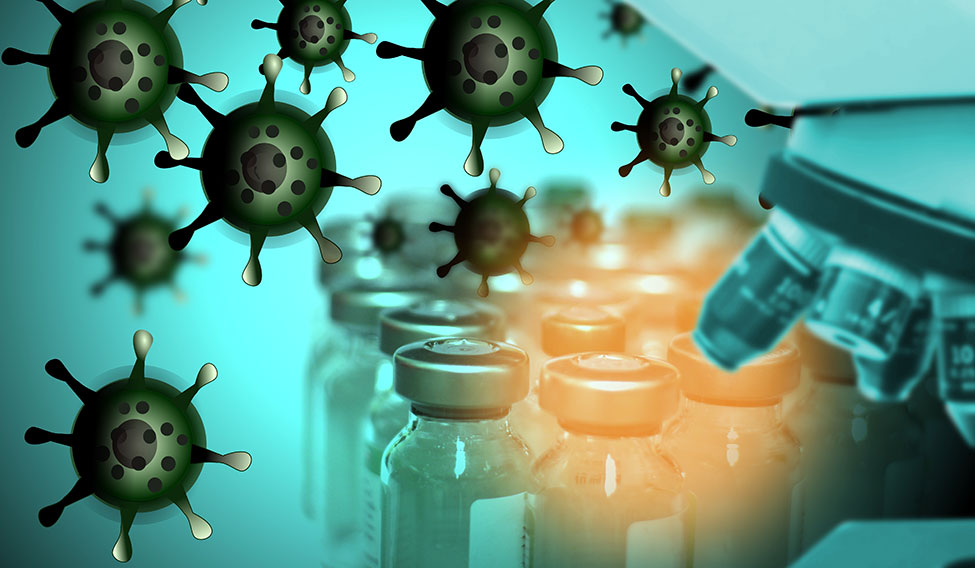The emergence of antimicrobial resistance (AMR) is a worrying phenomenon and has been identified by the United Nations and the World Health Organisation as a major scientific problem which needs urgent and coordinated international action. The development of resistant strains of bacteria requires not just careful monitoring, but adoption of improved behaviours in terms of antibiotic selection and consumption.
Recently there have been worrying reports on emergence of bacterial strains, resistant to the antibiotics of last resort. And to counter this, there is obviously a need to develop new drugs. However, the adoption of relatively simple behaviours which include reduced antibiotic consumption and judicious prescription of antibiotics, will in turn reduce resistance development rates and better maintain the efficacy of current drugs. Through technological advances it will be possible to achieve substantial reductions in the spread of AMR.
Research groups around the world—including my own at the University of Strathclyde—are working to develop an improved diagnostic testing to identify antibiotic resistant strains and to choose the correct drug for an infection. In modern science it is necessary to form interdisciplinary collaborations in order to successfully develop new technologies. For example, to develop a sensitive, specific and well-designed sensor for the measurement of antibiotic genes, it is crucial to combine aspects of engineering, microbiology, chemistry, and medicine. Universities are aware of this and have fostered an environment for collaboration among staff from different departments who are engaged in the same research theme. One such collaborative project I was involved in was the development of a sub half-hour test for methicillin resistant staphylococcus aureus (MRSA), a drug resistant infection often picked up in hospital and community care settings.
My attention has now turned to the problem of sepsis—a complicated and unusual disease. According to a study published in the Lancet, in India sepsis is responsible for more than a quarter of neonatal deaths. In the UK, sepsis kills 37,000 people every year. According to recent figures published by the National Health Service, in the UK more people die from sepsis than lung, breast and bowel cancer combined. And, for every one-hour delay in diagnosis the chance of dying from sepsis increases from 6 to 10 per cent.
The condition arises when an infection triggers a heightened and dysregulated immune
response. It can be caused due to a number of factors, which include, surgery, urinary tract infections, being wounded or immunocompromised. An added difficulty with sepsis is the initial vague and non-specific symptoms.
The prescription of a suitable antibiotic and the introduction of the correct supportive measures are crucial in managing patients with sepsis. Current sepsis testing procedures involve the use of time consuming routine laboratory techniques, often resulting in time lags of 12 to 72 hours for a result to reach the clinical team. Therefore, rapid testing is crucial.
In my project, we are developing a sensitive array of electrodes, which can act as a lab-on-a-chip by detecting the presence of DNA from a range of sepsis causing bacteria. In this case, the initial focus is on the strains: Streptococcus pneumoniae, Neisseria meningitidis and Haemophilius influenzae which are responsible for septicaemia and meningitis.
The microplate sensor will offer the ability to rapidly identify whether patients with vague, non-specific symptoms have sepsis and will provide doctors with the identity of the infectious agent, allowing prescription of the correct antibiotic.
Initially, the test is intended for use in intensive care units where antibiotic resistance rates are especially high, but it will ultimately be applicable to a wide range of scenarios including pharmacies and general procedure surgeries.
The microplate project is an attempt to produce a rapid and miniaturised version of the commonly employed antibiotic susceptibility test which is currently carried out using agar plates and the disk diffusion method. This approach is very reliable but takes relatively long time for results.
The goal of this project is to produce a microchip-sized technology which accepts any clinical sample (blood, urine, saliva, etc) and quickly tell which antibiotic will be most effective against the infection.
Such diagnostic techniques can also be used to identify multi-drug resistant gram-negative infections, which are currently taking firm hold in hospitals in the UK.
In this case the test would rapidly identify the presence of antibiotic resistant bacteria based on the amplification of several resistance genes present in the DNA of the infectious agent.
Such projects will hopefully result in new approaches and technologies for the rapid determination of antibiotic resistance, identification of the infectious agent and selection of the most suitable antibiotic; all with the aim of prolonging the efficacy of current medicines.
All the technologies involved will lend themselves to the production of cheap, mass-producible, easily used tests, which can be deployed in a range of settings. Those involved are motivated by not wanting to see a return to the pre-antibiotic age by injudicious use of existing medicines.
Corrigan is lecturer at department of biomedical engineering, University of Strathclyde.






